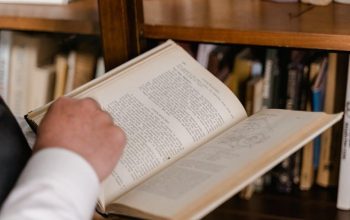This lab utilizes the PhET Interactive Simulations, providing an engaging, game-like environment․ Students learn through exploration and discovery․ The lab focuses on wave behavior, including interference patterns․ Experiment with sound and light waves․
Understanding Wave Interference
Wave interference occurs when two or more waves overlap in space․ The resulting wave amplitude is determined by superposition․ This principle leads to constructive and destructive interference, shaping wave patterns․ Study these wave interactions․
Constructive Interference
Constructive interference happens when two waves align in phase, meaning their crests and troughs coincide․ This alignment results in an increased amplitude of the resulting wave․ The combined wave is larger than either individual wave․ Think about pushing someone on a swing at the peak of their swing․ The impact of both waves results in a stronger wave․
This is the principle behind noise-canceling headphones․ When waves constructively interfere, it causes the sound to become louder․ The PhET simulation allows visualizing how wave addition creates areas with high amplitude․ Explore parameters, and observe the sound produced using speakers․
Destructive Interference
Destructive interference occurs when two waves are completely out of phase; the crest of one wave aligns with the trough of another․ This alignment causes the waves to cancel each other out, decreasing the amplitude of the resulting wave․ If the waves have equal amplitudes, they can completely eliminate each other at that point․
Explore the PhET simulation to observe the areas where waves destructively interfere․ Notice how the wave addition creates areas with low amplitude․ Destructive interference is the phenomenon behind noise-canceling headphones․ The headphones generate waves that are out of phase with the incoming noise, effectively canceling it out․
PhET Simulation Overview
The PhET simulation offers a virtual lab to explore wave interference․ This interactive tool allows manipulation of wave parameters․ Observe resulting interference patterns for a comprehensive understanding․
Accessing the Wave Interference Simulation
To begin your exploration of wave interference, first navigate to the PhET Interactive Simulations website․ A simple web search for “PhET Wave Interference” will lead you to the correct page․ Once there, locate the simulation titled “Wave Interference” within the PhET collection․
The simulation offers various options for exploring wave phenomena․ You can choose between different types of waves, such as water waves, sound waves, and light waves․ Select the type of wave that you wish to investigate․ From there, you can start experimenting with various parameters․
The PhET website offers options to run the simulation directly in your browser or download it for offline access․ Select the option that best suits your needs and device․ Once the simulation loads, you’re ready to begin experimenting and observing the fascinating world of wave interference․
Exploring Simulation Parameters
Once you have accessed the Wave Interference simulation, take some time to familiarize yourself with the available parameters․ These parameters allow you to manipulate various aspects of the waves and observe their effects on interference patterns․ Key parameters include frequency, amplitude, and the number of wave sources․
Experiment with adjusting the frequency of the waves․ Observe how changes in frequency affect the wavelength and the resulting interference pattern․ Similarly, explore the impact of altering the amplitude of the waves․ Notice how amplitude affects the intensity or brightness of the interference pattern․
The simulation also allows you to control the number of wave sources․ Start with one source to observe the basic wave behavior․ Then, add a second source to create interference patterns․ Experiment with the separation between the sources and observe how it affects the spacing and clarity of the interference fringes․ By systematically varying these parameters, you can gain a deeper understanding of the principles governing wave interference․
Experimenting with Sound Waves
The PhET simulation allows for experimentation with sound waves․ Adjust frequency and amplitude․ Observe interference patterns․ Explore one or two speakers․ Record your observations․ Conclude the experiment․
Adjusting Frequency and Amplitude
When experimenting with sound waves within the PhET simulation, the ability to adjust frequency and amplitude is crucial for understanding wave behavior․ Frequency determines the pitch of the sound, with higher frequencies resulting in higher-pitched sounds․ Amplitude, on the other hand, relates to the intensity or loudness of the sound wave․ Increasing the amplitude will increase the intensity․
By manipulating these parameters, students can observe the effects on wave interference patterns․ Higher frequencies lead to shorter wavelengths, influencing the spacing and clarity of interference fringes․ Altering the amplitude affects the overall intensity of the observed patterns, making them more or less pronounced․ Through careful adjustment and observation, students can gain a deeper understanding of the fundamental properties governing sound waves and their interactions․
Observing Interference Patterns with Sound
Using the PhET simulation, observing interference patterns with sound waves becomes an interactive experience․ Set up two speakers emitting sound waves of the same frequency and amplitude․ Students can explore regions of constructive and destructive interference by moving a detector or “ear” around the simulated space․
Constructive interference occurs where the waves are in phase, resulting in a louder sound, while destructive interference happens where the waves are out of phase, leading to a quieter or even silent spot․ These patterns are visible through changes in sound intensity and can be mapped out to understand the relationship between wavelength, source separation, and interference․ By adjusting the frequency and distance between speakers, students can directly witness how these variables influence the resulting interference pattern․
Experimenting with Light Waves
The PhET simulation allows experimenting with light waves․ Explore double-slit interference and diffraction gratings․ Observe how light waves interact, creating patterns of constructive and destructive interference․
Double-Slit Experiment
The double-slit experiment, a cornerstone of wave behavior, is easily explored using the PhET simulation․ By selecting the “Two Slits” option, students can observe the interference patterns created when light passes through two narrow openings․ This setup vividly demonstrates the wave nature of light and the principle of superposition․
Adjusting parameters such as slit separation and wavelength allows for a deeper understanding of how these factors influence the resulting interference pattern․ Students can measure the distance between bright fringes and relate it to the slit separation and wavelength of light, solidifying their comprehension of the underlying physics․
Furthermore, this interactive simulation provides an engaging and intuitive way to visualize wave interference, making the abstract concepts more accessible and understandable․ The PhET simulation promotes active learning and encourages exploration, making the double-slit experiment a valuable tool for physics education․
Diffraction Grating
The PhET simulation also allows for the exploration of diffraction gratings, which consist of multiple slits․ This extends the concepts learned in the double-slit experiment․ By using a diffraction grating, the interference pattern becomes sharper, enhancing the separation of different wavelengths of light․
Students can manipulate the number of slits and the slit spacing to observe how these parameters affect the diffraction pattern․ This allows them to investigate the relationship between the grating’s properties and the angles at which constructive interference occurs for different wavelengths․
The interactive nature of the PhET simulation makes it easy to visualize the complex interference patterns produced by diffraction gratings․ This provides students with a powerful tool for understanding the principles behind spectroscopy and other applications that rely on the dispersion of light․
Analyzing Results and Answering Questions
After completing the experiments with both sound and light waves, students should analyze their observations and draw conclusions about wave interference․ They should address specific questions related to the concepts explored in the lab․ These questions can be designed to assess their understanding of constructive and destructive interference․
Furthermore, questions can probe the relationship between wavelength, frequency, and interference patterns․ For the double-slit experiment and diffraction grating, students should explain how changing the slit separation affects the observed pattern․
By answering these questions, students will solidify their understanding of the principles governing wave interference․ They will also develop critical thinking skills by connecting their experimental observations to the underlying physics concepts․ This analytical process is crucial for a comprehensive understanding of wave phenomena․


